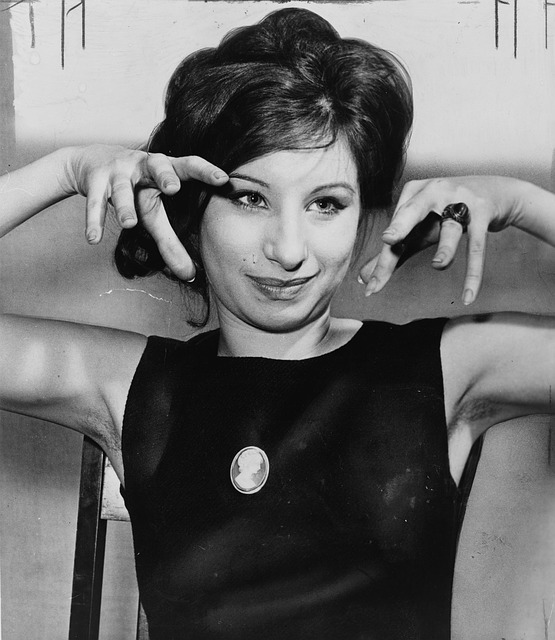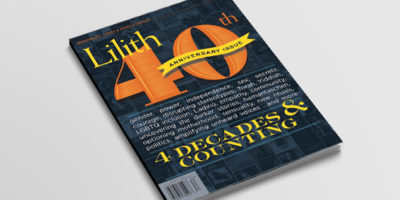
from “Maybe I Could Be Like Barbra—GAWJUS!”
Barbra (unfixed nose & all) gave Jewish female faces, and their owners, a new self-respect. Here’s how one fan worshipped her idol. [Spring 1996]
When Barbra Streisand sang, with a meaningful nod, “We grew up together” in the opening number of her HBO recorded concert, my partner turned to me and said, “Everyone in the audience thinks she’s singing directly to them.” “Well, they’re wrong,” I said. “She’s singing directly to me.”
I felt this with as much certainty in 1996 as I felt it in 1962, when she sang, “I’d like to be not evil/ but a little worldly wise/ to be the kind of girl designed/ to be kissed upon the eyes.”
At the time I was 16 and living in a small Long Island town where 90% of my high school’s population was Irish or Italian. Normal adolescent insecurity was intensified every time I looked into a mirror and saw a long, slightly hooked nose above fat lips that seemed to wander all across my face when I spoke. Even my bright blue eyes were no asset compared to the nutmeg pools floating in faces that brought to mind the olive groves of Italy, or hazel eyes surrounded by a riot of cute freckles. In short, not only didn’t I fit the fashion magazine beauty standard of the day, I was totally out of sync with my peers. I didn’t just think I was hideous—I thought I was a complete oddity.
All of this changed when the funny girl with a voice to die for started show- ing up on television. My mother and aunts, who played Barbra’s first album several hundred times daily, declared with authority that I looked exactly like Barbra Streisand. Soon friends and strangers were saying the same. Did I really look like Babs? Well, if context is everything, then I suppose I did: in a landscape devoid of young Jewish girls, Barbra Streisand served as a needed reference point that finally validated my looks.
While references to our resemblance meant that at least I wasn’t a total freak, they were certainly not intended as compliments: La Streisand was then universally perceived as a girl whose physical grotesqueness was redeemed only by the beauty of her voice. She capitalized on this image, actively promoting herself as a lovable but ugly kook: perched atop a bench on the Ed Sullivan show wearing a goofy cap, she cracked self-deprecating jokes before opening her wide unwieldy mouth to sing, thereby forcing into stunned silence those who judged her by her looks.
“I’m a bagel on a plate full of onion rolls,” she said as her alter ego, Fanny Brice, in “Funny Girl.” Later in the movie she refuses to sing “I am the beautiful reflection of my love’s affection” unless she can turn it into farce by stuffing her belly with a pillow. In my young mind, the experiences of Fanny Brice, Barbra Streisand and myself merged into one and the same story….
Over the course of Barbra’s career she’s dropped the ugly kook routine and has grown into a beautiful woman. What’s more significant, though, is that America has come to perceive her as beautiful. While fashion model images do still reign supreme, it is telling that Barbra came to be seen as what she always insisted, tongue-in-cheek, that she was: Gawjus. Just as the bagel, once an ethnic treat enjoyed almost exclusively by Jews, became main streamed to the point that every neighborhood now sports a Bagel Nosh or Posh, so too did Barbra and her big nose gradually become accepted. The ugly kook became a swan.
…The very thing the critics found appalling about Barbra is what I find so redemptive: what they call self-indulgence is also self-revelation.
And self-revelation may ultimately be Barbra Streisand’s most enduring legacy. For me, it began with her first revelation: by shoving a Jewish girl’s face in front of the cameras she was announcing, beneath all the self-deprecation, I’m here, I’m a bagel, and you’re gonna learn to love me.


